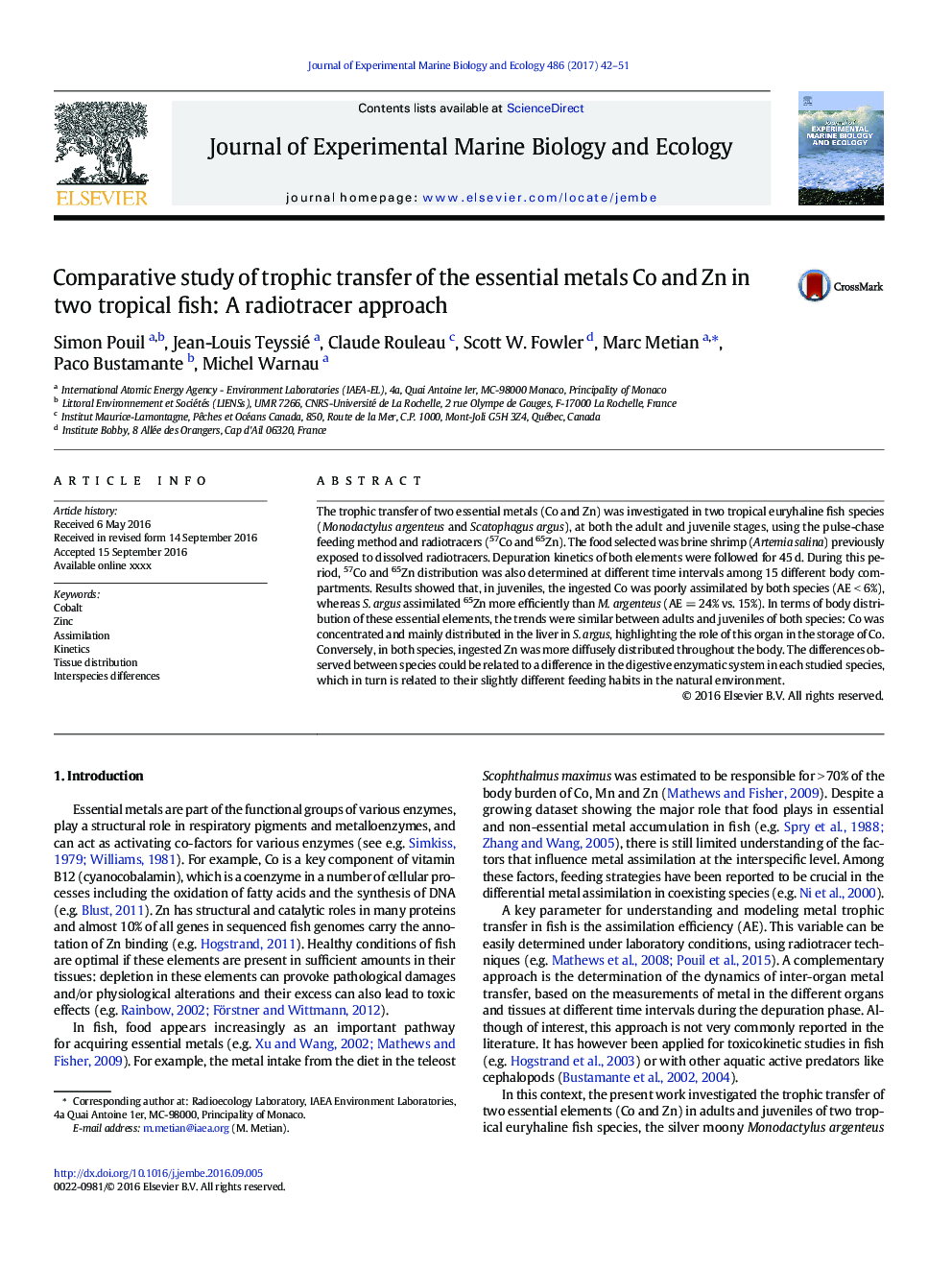| Article ID | Journal | Published Year | Pages | File Type |
|---|---|---|---|---|
| 4395164 | Journal of Experimental Marine Biology and Ecology | 2017 | 10 Pages |
Abstract
The trophic transfer of two essential metals (Co and Zn) was investigated in two tropical euryhaline fish species (Monodactylus argenteus and Scatophagus argus), at both the adult and juvenile stages, using the pulse-chase feeding method and radiotracers (57Co and 65Zn). The food selected was brine shrimp (Artemia salina) previously exposed to dissolved radiotracers. Depuration kinetics of both elements were followed for 45Â d. During this period, 57Co and 65Zn distribution was also determined at different time intervals among 15 different body compartments. Results showed that, in juveniles, the ingested Co was poorly assimilated by both species (AEÂ <Â 6%), whereas S. argus assimilated 65Zn more efficiently than M. argenteus (AEÂ =Â 24% vs. 15%). In terms of body distribution of these essential elements, the trends were similar between adults and juveniles of both species: Co was concentrated and mainly distributed in the liver in S. argus, highlighting the role of this organ in the storage of Co. Conversely, in both species, ingested Zn was more diffusely distributed throughout the body. The differences observed between species could be related to a difference in the digestive enzymatic system in each studied species, which in turn is related to their slightly different feeding habits in the natural environment.
Related Topics
Life Sciences
Agricultural and Biological Sciences
Aquatic Science
Authors
Simon Pouil, Jean-Louis Teyssié, Claude Rouleau, Scott W. Fowler, Marc Metian, Paco Bustamante, Michel Warnau,
